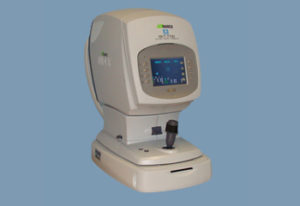How Does a Tonometer Work?
 Glaucoma is one of the leading causes of permanent blindness around the world. More than 3 million people suffer from this condition in the U.S. alone. A tonometer offers a succinct and accurate way to diagnose glaucoma, and then identify treatment options.
Glaucoma is one of the leading causes of permanent blindness around the world. More than 3 million people suffer from this condition in the U.S. alone. A tonometer offers a succinct and accurate way to diagnose glaucoma, and then identify treatment options.
Tonometry is a practice in which the eye’s intraocular pressure (IOP) is measured. This is determined by the eye surface’s firmness or tone. Normal IOP readings typically register around 15. Readings at 21 or higher often indicate a likelihood for glaucoma development.
THERE ARE FOUR COMMON TYPES OF TONOMETERS
1. Non-contact
This type of tonometer has been popularized by eyewear retailers like LensCrafters. Non-contact tonometry is often called the “air puff” test. Here, a small blast of air is shot into the eye, flattening the cornea.
2. Goldman
The Goldman tonometer is the most well-known, and it’s considered by many to be the most accurate. This tonometer involves the use of eye drops and dyes. After both have been administered, a blue light is turned on to illuminate the dye. The tonometer’s probe then presses against the eye, making an indentation in the cornea. The pressure exerted from the cornea gives the IOP reading.
3. Schiotz
This tonometer uses indentation, like the Goldman tonometer. However, Schiotz tonometry rests a tiny metal plunger on the cornea. The reading is based on the depth of deformity caused by the plunger. Schiotz tonometry is not used as commonly.
4. Electronic
The electronic tonometer is a handheld device that takes up considerably less space but is also considered highly inaccurate, compared to the Goldman tonometer.
In the quest to treat glaucoma, a tonometer is the fastest and most reliable way to secure an accurate diagnosis.
Here are a few tonometers Global DSR offers:
Marco M3 (RKT-7700)
Nidek Tonoref II












